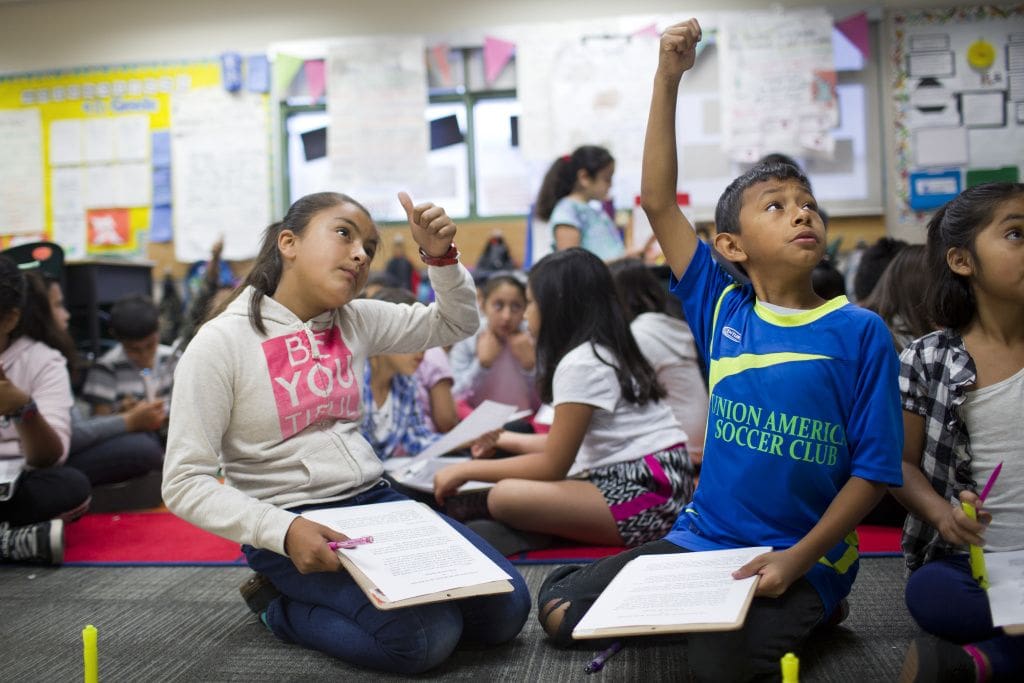The Texas Senate and House of Representatives have agreed on a $217 billion 2018-2019 budget, officially named Senate Bill 1. Though the dollar amount is about the same as the 2016-2017 level of support for public and higher education, health care, public safety, and other services, the budget is actually a decrease of about 8 percent in “real” terms, given the rapid population growth and inflation forecast for the next two years.
A handful of changes were made since the Senate and House began the conference process last month, but from the start the total amount to be spent in the budget proposals only differed by about $400 million (0.2 percent). Instead, conferees negotiated about how to allocate scarce state dollars across competing demands.
Overall, the state failed to make meaningful investments in public education; underfunded Medicaid enough to ensure a very large supplemental bill for the 2019 Legislature; and did the bare minimum for higher education. Those decisions do not set up our state to compete and succeed, or to create the kind of communities in which both businesses and families can thrive.
*The total amount of General Revenue spending is $107.8 billion, about the same as the current (2016-2017) budget of $108 billion. That is at least $2 billion short of the “bare bones” minimum that would have funded current services, and even further below the almost $115 billion requested by state agency heads. Remember that as the Texas population grows rapidly, so does the number of students enrolled in public schools – to give just one example. So keeping overall spending flat is actually a significant cut to investments.
*The final deal relies on part of the Senate proposal to defer $1.8 billion of a constitutional highway fund transfer until fiscal 2020. This means that $1.8 billion can be counted as General Revenue available in 2018-2019.
*Inexplicably, SB 1 proposes using less than $1 billion of the state’s $10 billion Rainy Day Fund, the largest such state reserve fund in the country. That means the balance will grow to almost $11 billion by the end of the 2018-2019 budget cycle. The Rainy Day Fund is specifically designed to help prevent sudden, massive cuts to essential services like health care and higher education. But the budget writers decided to use only a fraction of the Fund, almost entirely for state facilities repairs, construction, and equipment purchases. Leaving such a massive reserve fund while failing to meet the growing needs of Texas is a foolish policy choice that threatens the future prosperity of our state.
*There is basically no additional funding for public education from the state budget – which means local property taxpayers will continue to foot well over half of the bill for public schools. The House passed a good bill to remodel the state’s school finance system, but the Senate poisoned the bill by adding a school voucher program. Texas public schools need $2.7 billion over the next two years just to keep up with inflation, and the Legislature has not funded any of this, keeping the basic per-pupil funding level at $5,140.
*Medicaid will certainly need supplemental appropriations before the next budget cycle ends in August 2019, as neither the House nor Senate was willing to include General Revenue needed for cost growth caused by medical inflation or higher usage or acuity. While that may be described as “business as usual,” other Medicaid decisions in SB 1 come as a major disappointment to advocates: The House had been willing to undo 75 percent of the cuts made by the 2015 legislature to children’s therapy rates, but the SB 1 conferees reduced that to a 25 percent restoration. Read more about Medicaid in the budget.
*In mental health, at least $160 million was added for various community-based services and projects, $35 million more was approved for state hospital operations, and $300 million from the Rainy Day Fund will be used for state hospital repairs and construction.
*Higher education institutions avoided the sudden loss of all “special item” support, but SB 1 puts most of this non-formula funding on a path to be recategorized, reduced or eliminated in the future. Among financial aid programs, TEXAS Grants received a 10 percent increase, allowing it to serve 92 percent of eligible college students in 2018-2019.
*The budget is constrained (or “tight,” as many lawmakers have said) because of self-inflicted revenue reductions and diversions lawmakers passed in the last couple of legislative sessions. Independent of the drop in oil and gas prices, the Legislature reduced the amount of General Revenue available by $10.5 billion through tax cuts and diversions in the last two sessions.
CPPP will continue crunching the numbers and analyzing the impact of the budget during the interim period. We will also raise awareness of the need for strong, stable sources of revenue to build a budget that meets Texans’ needs.
